If engine power drops, increased noise is heard, or periodic "howling" is heard when the fuel pump is running, then most likely the fuel pump is out of order
First, check the pressure in the fuel supply system by connecting a pressure gauge to the valve on the rail in the engine compartment (see "Losing fuel pressure Niva Chevrolet").

If the pressure in the system is less than 250 kPa (2.5 kgf/cm2), replace the fuel filter (see "Replacing the fuel filter Niva Chevrolet").
If this does not help, try removing the pump and washing the mesh of its receiver.
If in this case the pressure does not increase, the fuel pump must be replaced.
You will need a "10" wrench (it is more convenient to use an end wrench).
Disconnect the wire from the "-" terminal of the battery.
Reduce the pressure in the fuel system
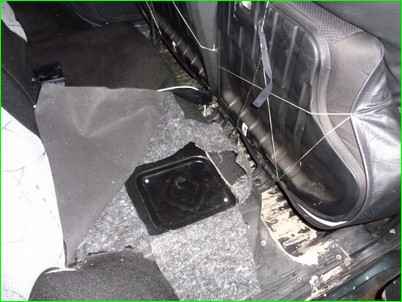
Fold forward the right side of the rear seat cushion.
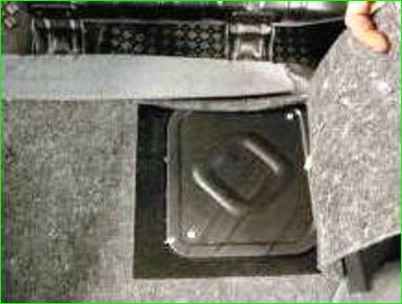
Bend back the cut out part of the soundproofing, under which is the hatch cover above the fuel tank.
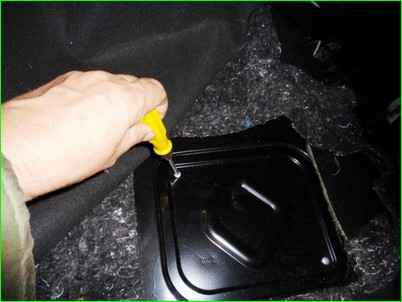
Unscrew the two mounting screws and remove the hatch cover
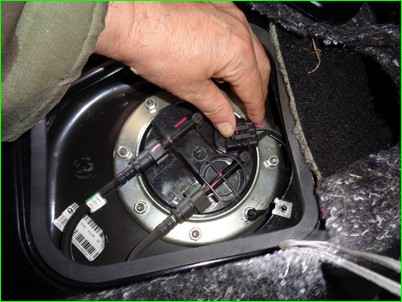
Disconnect the wiring harness block from the pump adapter block.

After squeezing the spring clamps, remove the fuel hoses from the pump pipes.
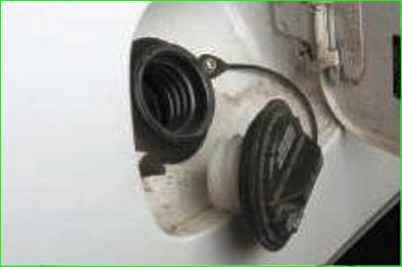
To prevent gasoline from being forced out of the pump pipes by excess vapor pressure, remove the plug filler neck
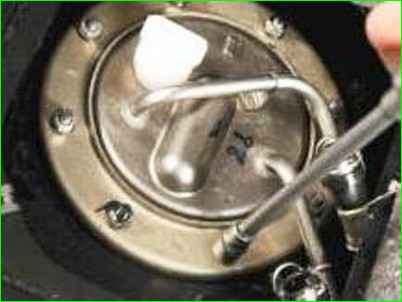
Unscrew the eight nuts securing the pump (there are spring washers under the nuts).
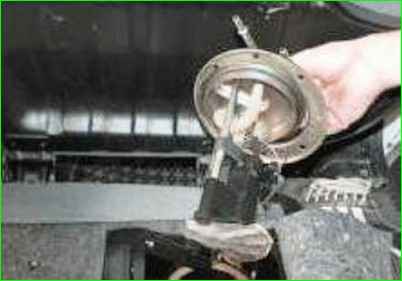
Lift the pump up, tilt it to remove the fuel level sensor float from the hatch, and remove the pump together with the clamping ring.
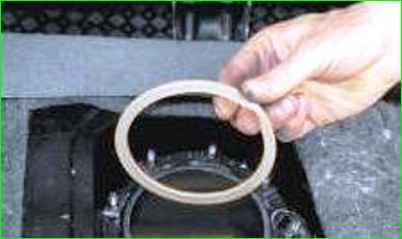
If the pump sealing ring remains on the tank, remove it and inspect it.
Replace a ring that is too compressed, has lost its elasticity, or is torn.
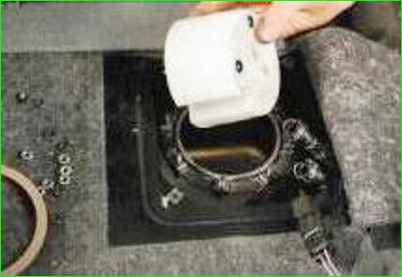
If the storage cup remains in the tank when removing the pump, remove it
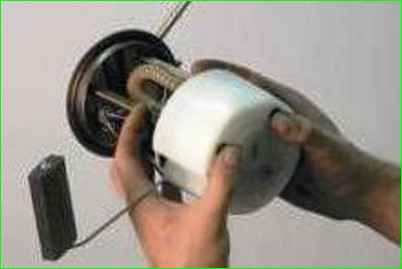
Before reinstalling the pump, secure it to the pump body with pins
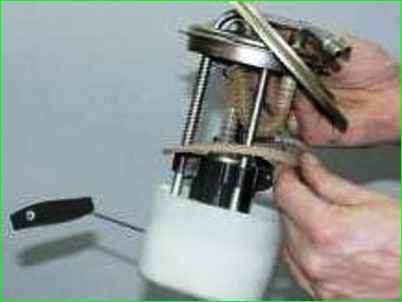
Put the sealing ring on the pump
Install the pump in the tank, correctly orienting it relative to the fuel hoses.
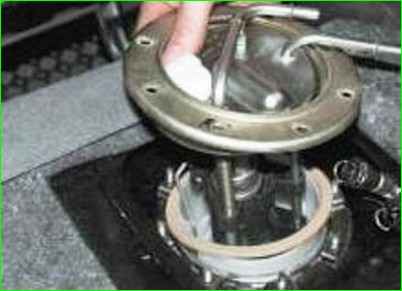
When tightening the pump mounting nuts, press the ring with pump, overcoming the resistance of the spring installed in the pump.





